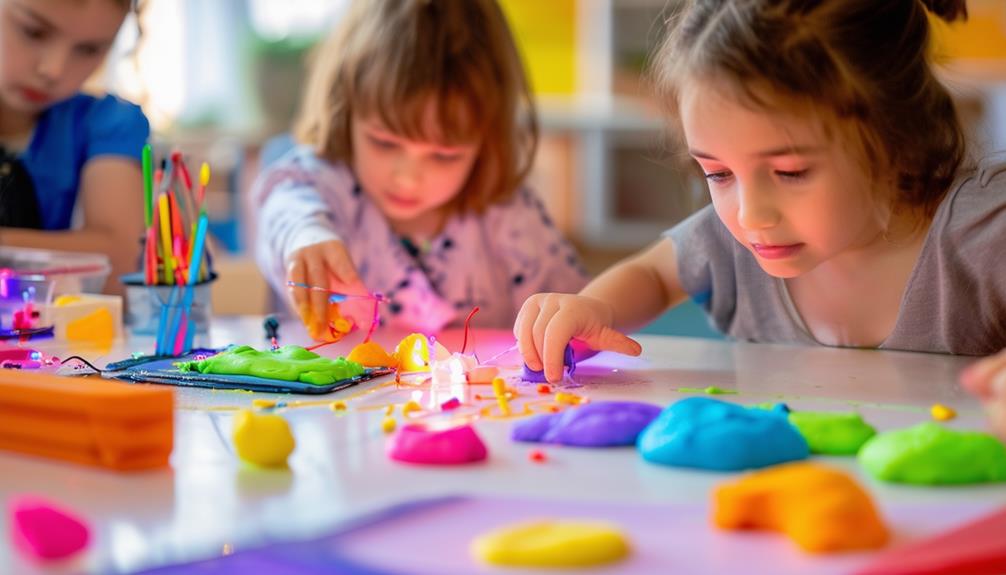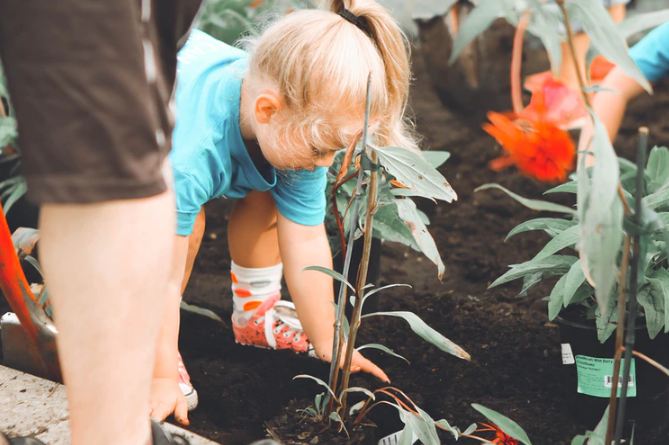Playdough and STEM: Educational Projects for Kids

When you think about playdough, you might picture simple crafts, but it offers much more potential when incorporating STEM concepts. Imagine your child learning engineering principles by constructing bridges or exploring chemistry through DIY playdough recipes. These hands-on projects not only entertain but also build critical skills in a fun, engaging manner. With each squish and mold, kids can experiment, design, and innovate. So, how can you transform a basic playdough session into an educational experience that sparks curiosity and creativity?
What Is Stem/Steam?
STEM, which stands for Science, Technology, Engineering, and Math, helps children develop critical thinking and problem-solving skills. Engaging in STEM activities teaches kids to think critically and approach problems methodically, essential skills in today's tech-driven world. STEAM, an extension of STEM, includes Art to promote creativity alongside technical skills.
Incorporating Art into STEM makes learning more dynamic. STEAM activities encourage children to use both sides of their brains, merging analytical thinking with creative expression. This holistic approach not only enhances problem-solving abilities but also sparks innovation and imagination.
When children participate in STEM or STEAM projects, they gain more than just coding or construction skills; they acquire hands-on experience. These activities involve imaginative thinking and practical challenges, making learning both enjoyable and effective. For example, a child designing a bridge with playdough or building a basic circuit applies complex concepts in a tangible, memorable way.
Whether in STEM Centers, Maker Spaces, or during morning activities, incorporating STEAM ensures children become well-rounded thinkers. By blending these disciplines, you equip them with the tools to creatively and confidently tackle future challenges.
Easy STEM Playdough Activities
Easy STEM playdough activities provide hands-on learning experiences that foster creativity and problem-solving skills in children. Perfect for use in STEM Centers, Maker Spaces, morning work, or for keeping fast finishers engaged, these activities enable the creation of dynamic projects that seamlessly integrate various STEM elements.
Typically, STEM playdough activities come with mats, posters, and task cards that present engaging challenges. These tools guide children through tasks, encouraging critical thinking and innovation. For instance, kids might be challenged to build structures or create simple machines using playdough, making learning enjoyable while developing essential skills.
The focus of these activities is on creative thinking, problem-solving, and critical thinking. Kids might be asked to construct a bridge that can hold a specific weight or design a playdough model of an animal. Such tasks require planning, testing, and revising, fostering an educational and enjoyable hands-on learning environment.
Benefits of STEM Playdough

Engaging in STEM playdough activities enhances fine motor skills and stimulates creativity in children. Manipulating playdough strengthens hand muscles and improves dexterity, essential for tasks like writing and cutting. These activities also foster artistic expression as kids mold and shape the dough into imaginative designs.
Moreover, STEM playdough introduces basic engineering concepts. Children learn about stability and balance by experimenting with building structures. This hands-on approach makes complex ideas accessible and enjoyable. As they construct and modify their creations, their hand-eye coordination improves, which is crucial for daily activities and learning.
STEM playdough activities also boost problem-solving skills. Kids face challenges such as making structures stand or replicating shapes, requiring critical thinking and persistence. These skills are valuable in both academic and real-life scenarios.
Materials Needed
To get started with STEM playdough activities, you'll need a variety of materials that spark creativity and learning. First and foremost, ensure you have plenty of playdough in different colors, as vibrant shades will captivate kids' attention and make the activities more engaging.
Next, gather toothpicks or craft sticks. These tools are excellent for enhancing fine motor skills and encouraging creative construction. They allow kids to build and connect different parts of their playdough creations, fostering an understanding of basic engineering concepts.
Plastic straws are another essential item. They can be cut and shaped to create unique structures, adding complexity to the projects. By incorporating straws, kids will explore principles of stability and design in a hands-on way.
Age-Appropriate Activities

Tailoring playdough activities to different developmental stages ensures that each child engages in enjoyable and educational experiences suited to their growth. For toddlers, sensory discovery with playdough is ideal, promoting tactile stimulation and creativity. Let them squish, roll, and poke the playdough; these simple activities are engaging for their developing minds.
Preschoolers benefit from exercises that involve shape and color recognition. Guide them to create circles, squares, and triangles or mix colors to discover new ones. These activities are foundational for early learning development and are both fun and educational.
Elementary students can use playdough to explore basic math concepts. Forming numbers, counting pieces, or creating simple addition and subtraction problems makes abstract concepts tangible and interesting.
Middle school kids can be challenged with more complex structures. Encourage them to build bridges or towers, fostering problem-solving skills and introducing basic engineering concepts. They will enjoy the satisfaction of bringing their creations to life.
High school students can delve into advanced engineering principles by creating intricate projects, such as working models or detailed architectural designs. These activities promote critical thinking and innovation, making learning both enjoyable and enriching.




